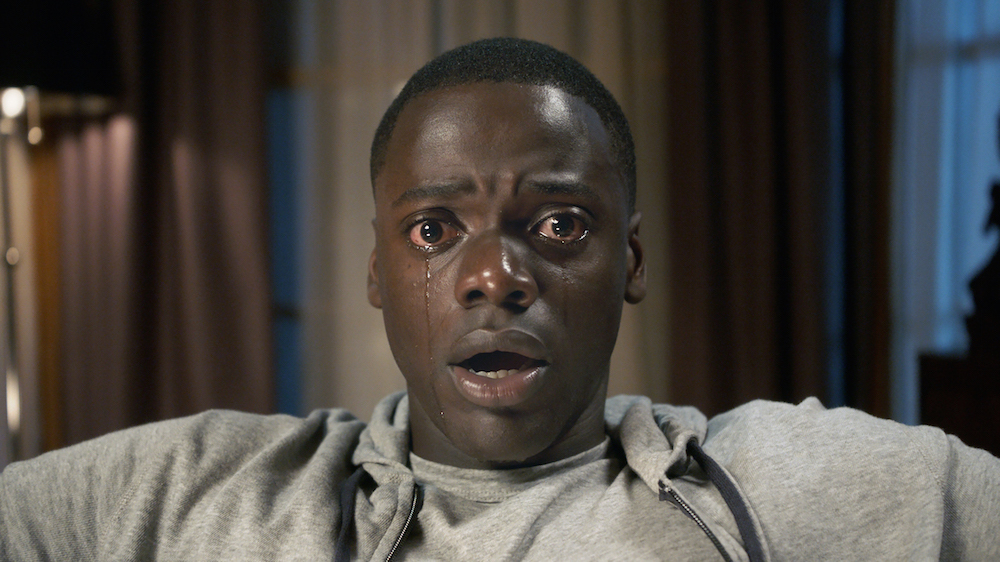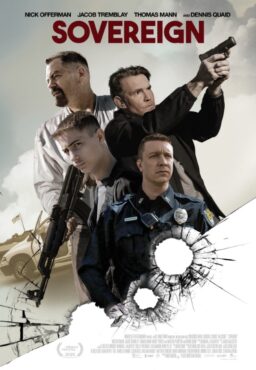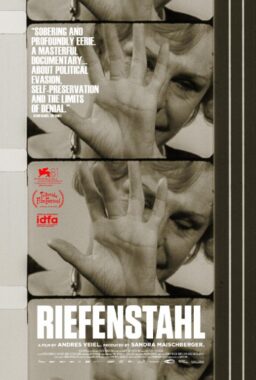This feature is a part of a series on the best films of the 2010s, resulting from our ranked top 25, which you can read here. This is #9.
If nothing else, Jordan Peele’s magnificent social thriller “Get Out” deserves its place on this list for its invention of The Sunken Place. How many other movies of this decade have not only coined a phrase, but also applied it to a concept this symbolically potent and physically threatening? Our first voyage there is unforgettable. The visual poetry of tear-streaked Chris (Daniel Kaluuya) falling helplessly into the void, pushed by an oppressor wielding the most genteel items as weapons, is the stuff not of nightmares but of night terrors. Peele is clever enough to disguise his scariest concept as a hypnosis-based cure for smoking, saving the full brunt of its horror for the moment we realize it’s a trial run for something far more sinister. In both cases, our hero unconsciously gives up his autonomy while still being present enough to know that it is gone.
The lack, or loss, of control is at the forefront of all great horror stories, from “Rosemary’s Baby” to “The Exorcist” to “Invasion of the Body Snatchers.” “Get Out” pays loving homage to those films’ ideas while melding them with a hilarious satire about interracial relationships both platonic and romantic. The screenplay is an equal opportunity gaslighter that uses the viewer’s race-based experiences and ideas to foster uncertainty; for Black viewers, it plants seeds of doubt in Chris’ increasingly paranoid reactions to the microaggressions Peele piles on. White viewers may consider those events to merely be clumsy overcompensations from people working extra-hard to make their Black guest feel comfortable and welcome.
Though there are elements that require suspension of disbelief, Peele creates much of our discomfort from realistic events. The catalyst of Chris’ tale is a scary rite of passage we’ve all endured: meeting the parents of the partners we love. In this case, Chris is headed to an upscale neighborhood to meet the family of his girlfriend, Rose (Allison Williams). “Get Out” tips its hand to its awareness of how viewers may construe intent differently during its first scene with the lovers. Chris asks Rose if her family knows that he is Black. “Should they?” she answers. Her question begets more questions—is Chris’ concern valid or is he being biased by assuming Rose’s parents would disapprove of him based on skin color? Is Rose being naïve, or does she have prior experience with this scenario? The answers become evident before the closing credits, and when they do, we see just how layered and clever Peele’s Oscar-winning script is. Nowhere is that cleverness more evident than in a second viewing of the film.

This is the kind of movie that inspires hundreds of fan theories and observations, a conversation starter with the capacity to end the discussion or send it spinning into the realm of conjecture. We learn that behind the smiling faces of the Armitages is a White supremacist slavery plot that involves taking control of a Black body equipped with real talent or, and this is where it gets amusingly sticky, a perceived asset based solely on stereotype. Athletic prowess is one of those stereotypes, and it might be noted that the Armitages’ plot seems to have originated with a defeat by Jesse Owens. Peele sticks this detail in some easily missed dialogue from the family patriarch, Dean (Bradley Whitford), only adding to the intrigue of The Sunken Place.
And what exactly is The Sunken Place? It has become part of the lexicon, at least amongst my African-American brethren—we’ve defined what it symbolizes and who’s in it. But what about in the context of “Get Out”? For me, this is Jordan Peele’s true masterstroke of satirical brilliance. This film is a parody of “post-racial America,” the asinine “racism is over” notion that was popular when Peele started writing this screenplay. Watching “Get Out” in 2019 for this piece, I was struck by how the unnecessary cruelty of The Sunken Place plays so well into the current climate of doing something hateful simply to “own” the opposing political side. After all, the clients of the Armitages’ body-swapping venture simply want to obtain the talent and experiences of that body without having to do any of the legwork. They could care less about what happens to its original inhabitant. So there’s no need to keep that sliver of consciousness that tells the former owner that it has been enslaved and is forever trapped. In fact, it’s completely unnecessary. The cruelty is the point.
None of this would hold together under Peele’s superb direction without the stellar work from his actors, all of whom are admirably game for their villainy and their heroism. Despite minimal screen time, Betty Gabriel is memorably creepy. Kaluuya was rightfully nominated for the type of internal acting Oscar usually ignores, but he should have been joined at that table by Allison Williams. Her Rose is one of the great villains in horror. She’s the linchpin of “Get Out,” and without her uncanny ability to hide her true evil under the guise of allyship (a second viewing shows just how good she is at this), the movie’s tricky construction would collapse. As Rose’s mother, and the proprietor of moviedom’s most evil piece of china, Catherine Keener uses her warmth and her open, inviting face against us, terrifying us without ever raising her voice.

“Get Out” also pays tribute to, and playfully mocks, the role of African-Americans in scary movies. We usually don’t make it out alive. The film uses the knowledge of that trope to give us one final goosing. Lil Rel Howery, the rowdy audience’s stand-in, plays a conspiracy theorist whose conspiracies lead him into the unexpected role of hero. His appearance, preceded by police sirens, caused a panicked member of my theater audience to shout, “Oh my God, Chris is so f—king dead!” That Chris makes it out alive was a source of mild controversy; some said his arrest would have made for a more potent finale. Peele even shot that ending, but realized that it would be more effective if Chris bucked the horror tradition. He made the right choice.
Peele’s triple threat work on “Get Out” made me think of Pauline Kael’s words on De Palma in her “Carrie” review: “You know you’re being manipulated, but he works in such a literal way, and with so much candor that you have the pleasure of observing how he affects your susceptibilities even while you’re going into shock. Scary-and-funny must be the greatest combination for popular entertainment …”
I’ll follow that with the words of a far less famous critic. In my Best Screenplay piece for the Muriel Awards, I wrote that this film “milks true horror by forcing everyone to identify with the day-to-day societal aggravations Black people endure. The extremes to which Peele takes this are the hallmarks of great satire.” This is why “Get Out” is one of the decade’s best movies.












